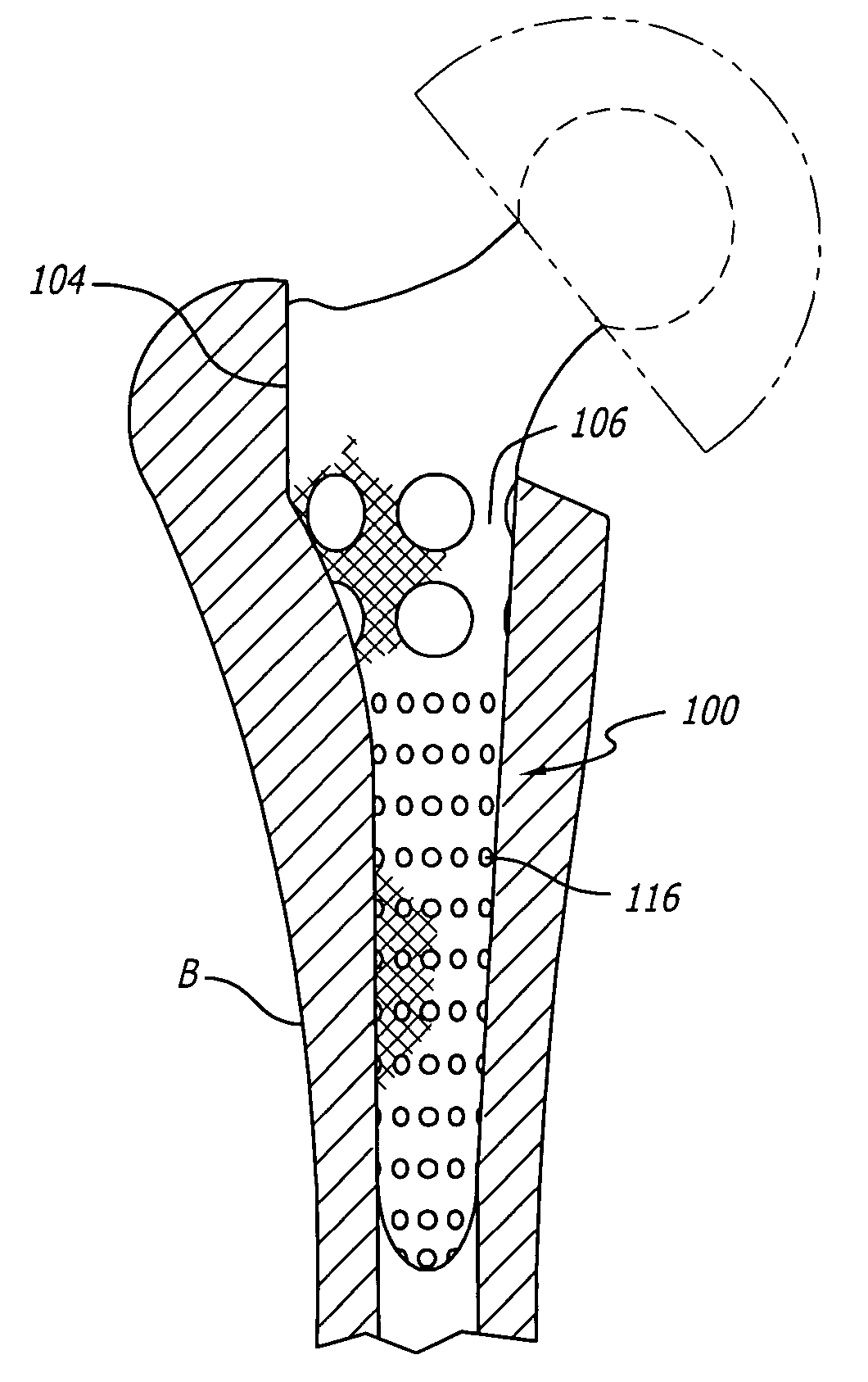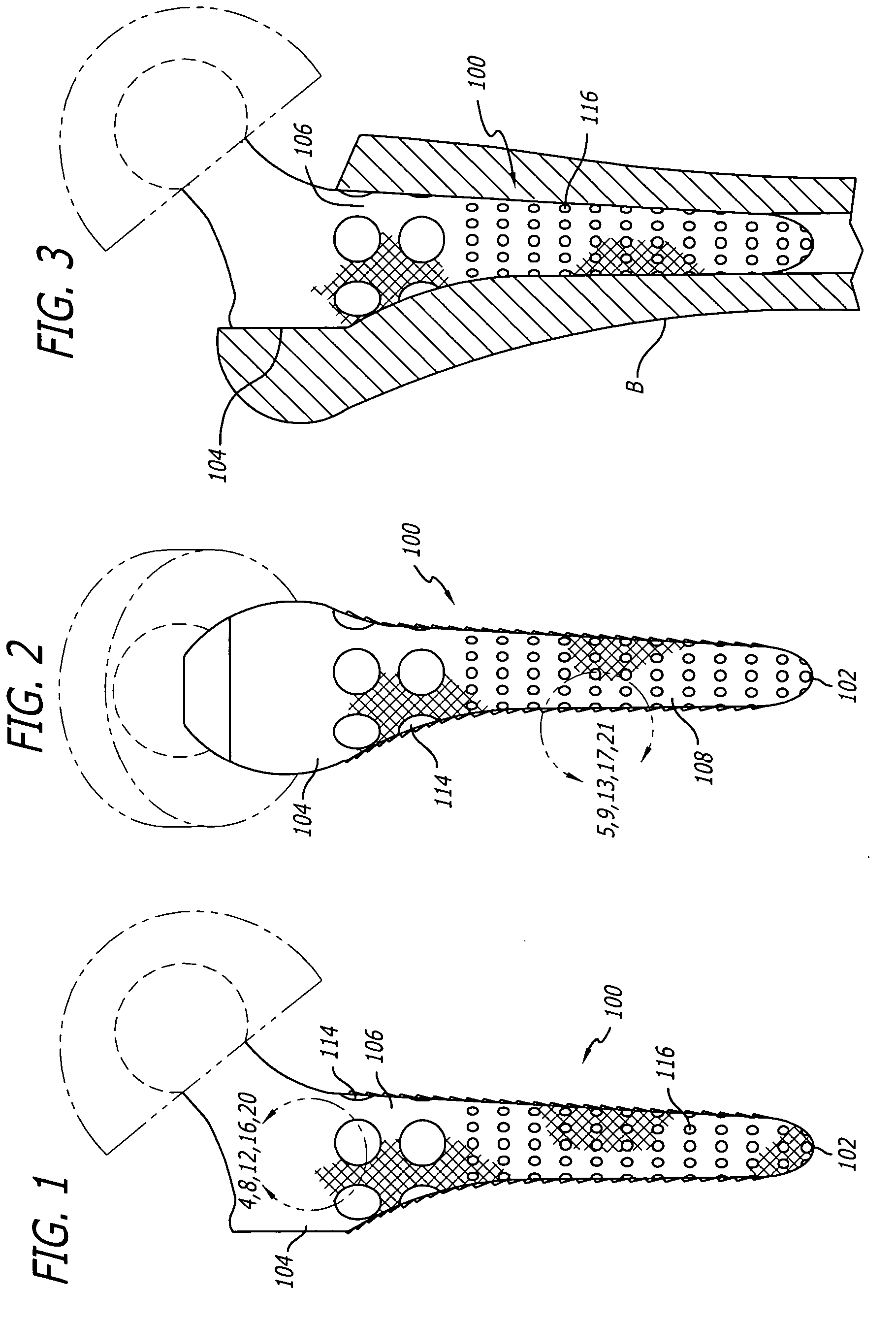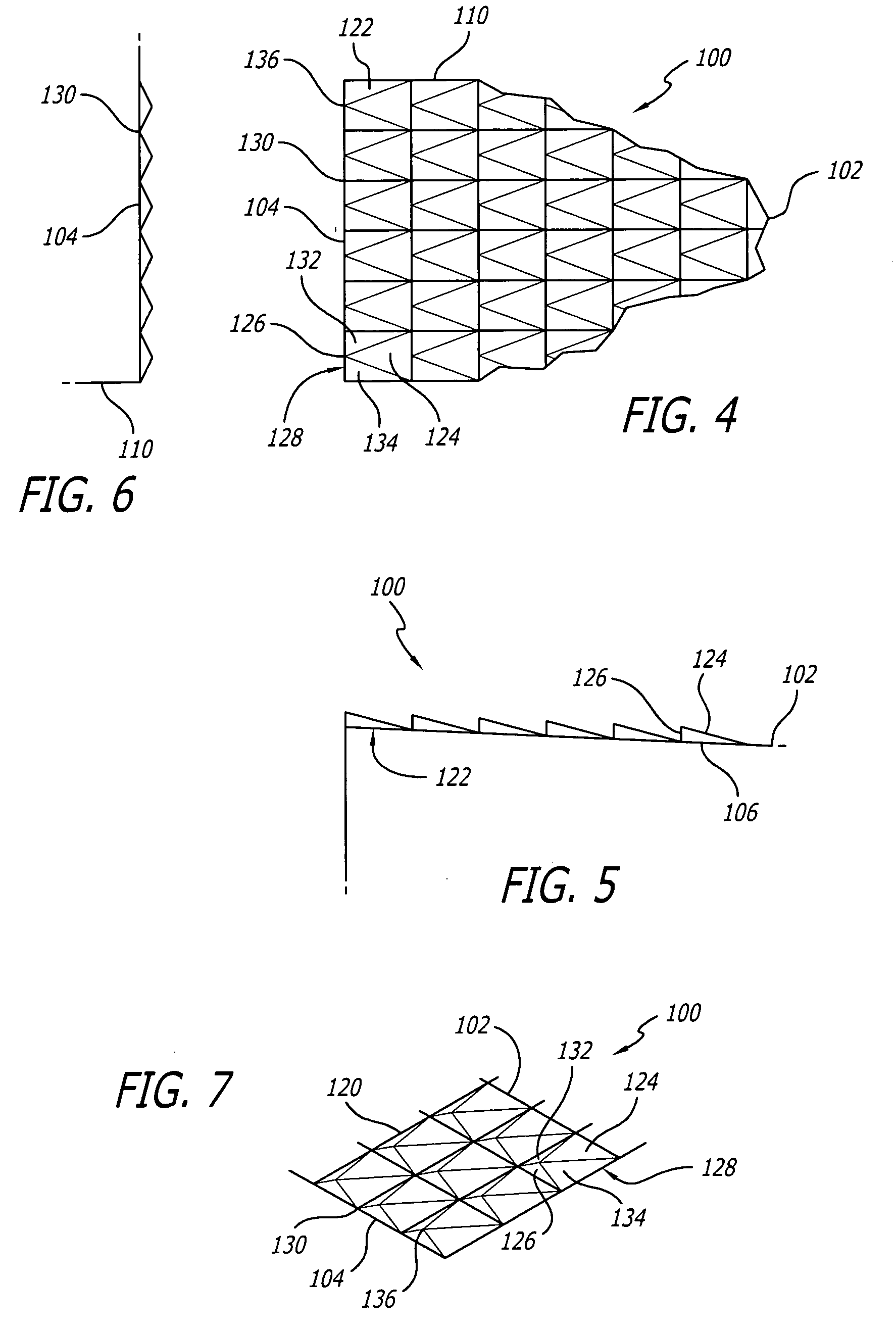Orthopedic implant surface configuration with a projection having a back cut
- Summary
- Abstract
- Description
- Claims
- Application Information
AI Technical Summary
Benefits of technology
Problems solved by technology
Method used
Image
Examples
Example
[0042] As shown in FIGS. 8-11, a second embodiment of the surface configuration of the present invention is generally referred to by the numeral 220. Surface configuration 220 includes surface projections 222 to facilitate insertion of implant 100 into an implantation site while resisting expulsion of implant 100 in a direction opposite to the direction of insertion. Each of surface projections 222 has an angled forward facet 224 directed at least in part toward leading end 202 of implant 100 and a rearward facet 226 directed at least in part toward trailing end 204 of implant 100. Forward facet 224 has a length greater than the length of rearward facet 226. Rearward facet 226 has a slope that is steeper than the slope of forward facet 224. In this embodiment, the base of rearward facet 226 forms an angle of approximately 45 degrees with respect to exterior surface 206 of implant 100. Each one of surface projections 222 has a left side facet 232 and a right side facet 234 directed t...
Example
[0044] As shown in FIGS. 12-15, a third embodiment of the surface configuration of the present invention is generally referred to by the numeral 320 is shown. Surface configuration 320 includes surface projections 322 to facilitate insertion of implant 100 into an implantation site while resisting expulsion of implant 100 in a direction opposite to the direction of insertion. Each of surface projections 322 has an angled forward facet 324 directed at least in part toward leading end 302 of implant 100 and a rearward facet 326 directed at least in part toward trailing end 304 of implant 100. Forward facet 324 has a length greater than the length of rearward facet 326. Rearward facet 326 has a slope that is steeper than the slope of forward facet 324. In this embodiment, the base of rearward facet 326 is “back cut” to form an angle greater than 90 degrees with respect to exterior surface 306 of implant 100. The configuration of rearward facet 326 further enhances resistance of motion ...
Example
[0046] As shown in FIGS. 16-19B, a fourth embodiment of the surface configuration of the present invention is generally referred to by the numeral 420. Surface configuration 420 includes surface projections 422 configured to facilitate insertion of implant 100 in the direction of insertion into an implantation site while resisting expulsion of implant 100 in a direction opposite to the direction of insertion. Each of surface projections 422 has an angled forward facet 424 directed toward leading end 402 of implant 100 and a rearward portion 426 directed toward trailing end 404 of implant 100. Forward facet 424 has a length greater than the length of rearward portion 426. Rearward portion 426 has a slope that is steeper than the slope of forward facet 424. In this embodiment, the base of rearward portion 426 forms an angle of approximately 90 degrees with respect to exterior surface 406 of implant 100. Rearward portion 426 can be a portion of surface projection 422, such as a facet, ...
PUM
| Property | Measurement | Unit |
|---|---|---|
| Angle | aaaaa | aaaaa |
| Length | aaaaa | aaaaa |
| Angle | aaaaa | aaaaa |
Abstract
Description
Claims
Application Information
 Login to View More
Login to View More - R&D
- Intellectual Property
- Life Sciences
- Materials
- Tech Scout
- Unparalleled Data Quality
- Higher Quality Content
- 60% Fewer Hallucinations
Browse by: Latest US Patents, China's latest patents, Technical Efficacy Thesaurus, Application Domain, Technology Topic, Popular Technical Reports.
© 2025 PatSnap. All rights reserved.Legal|Privacy policy|Modern Slavery Act Transparency Statement|Sitemap|About US| Contact US: help@patsnap.com



